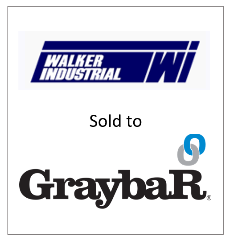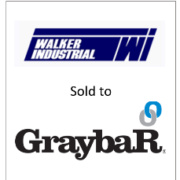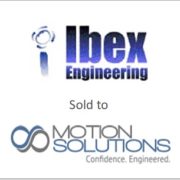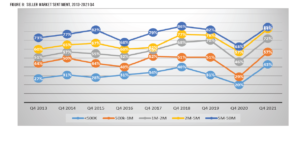Business values increased in 2021, despite ongoing challenges from the pandemic, talent shortages, and supply chain disruption. Deal activity continued at an intense pace, with advisors across the country reporting increases in both incoming deal flow and completed engagements.
More advisors characterized this as a seller’s market than nearly any other time in the last decade, according to the year-end Market Pulse report from IBBA and the M&A Source. Buyer confidence is high, as is competition for quality deals.
Businesses with enterprise value of $5 million to $50 million earned an average multiple of 6.0x EBITDA (a survey peak), realizing an average final sale price at 113% of the internal target benchmark. Multiples remained at or near market peak throughout the Main Street and lower middle market.
Meanwhile, time to close shrank in nearly all market segments. Time to close was likely facilitated by the high rate of buyer competition as well as a push to get deals closed before year-end.
The year end is always a hot time to get deals done as buyers and sellers push to meet self-imposed deadlines. We also know a number of sellers entered the market in early 2021, planning to get ahead of potential increases in capital gains taxes. Many of those deals would have had accepted offers and been in due diligence by the time it became clear tax changes were not yet coming.
Main Street activity
In the Main Street market last year, individual buyers accounted for 71% of business transitions. Of those, 40% were first time buyers and 31% were repeat business owners or what we call “serial entrepreneurs.”
Another 26% of Main Street buyers were existing companies. These are the strategic buyers acquiring other businesses as a way to expand or eliminate competition. A small percentage, just 3%, were private equity acquisitions.
While market definitions vary, businesses are generally considered “Main Street” if they have an enterprise value of less than $2 million. The majority of the transactions that happen in this sector are small, less than $500,000.
In 2021, the most active industries trading hands in the Main Street market were personal services (15%), construction (12%), business services (12%), consumer goods/retail (12%), and restaurants (11%). This represents a small drop-in restaurant activity, likely due to ongoing fallout from the pandemic.
Of those Main Street sellers who went to market in 2021, 53% were preparing for retirement. Another 11% were selling as part of a recapitalization. In a recap, the seller (or sometimes their management team) keeps some level of equity stake in the business while a buyer infuses new capital for growth. Other reasons Main Street sellers went to market included burnout, health issues, relocation, and family issues.
Lower middle market activity
In the lower middle market, where businesses are valued between $2 million and $50 million, the buyer pool shifts. Here individuals accounted for a third (34%) of buyers in 2021, relatively on trend with past years.
The number of individuals buying businesses in 2021 is notable given the highly competitive talent market. It’s likely these buyers (and Main Street buyers, too) could have their choice of employment opportunities. And yet there remains a definite draw to being a business owner. People still want to build something of their own and control their own destiny, even in a job seeker’s market.
Existing companies accounted for 40% of lower middle market transitions in 2021. Generally, these companies have strong balance sheets and are looking to acquisition as a way to grow at a time when organic growth is difficult due to talent shortages.
Private equity continues to remain active in the lower middle market, accounting for 24% of all business transitions. Private equity buyers generate financial returns by acquiring businesses. They typically plan to hold a business for 5 to 7 years, often acquiring similar types of businesses to bolt on, before reselling a larger, more lucrative operation.
These financial buyers tend to focus their efforts on middle market opportunities of $50 million or more. But with competition for those larger deals running hot, we see many firms ticking their attention down to the lower middle market. Here it’s possible to find deals that are large enough to make a difference in their portfolio and yet small enough to go unnoticed by some of their competitors.
For advice on exit planning or selling a business, contact Al Statz, CEO of Exit Strategies Group, Inc., at alstatz@exitstrategiesgroup.com. Exit Strategies Group is a partner in the Cornerstone International Alliance.















